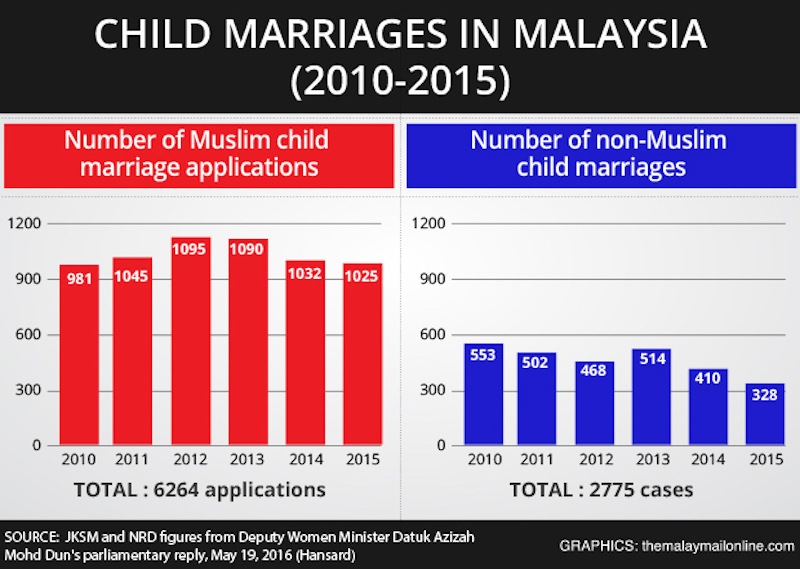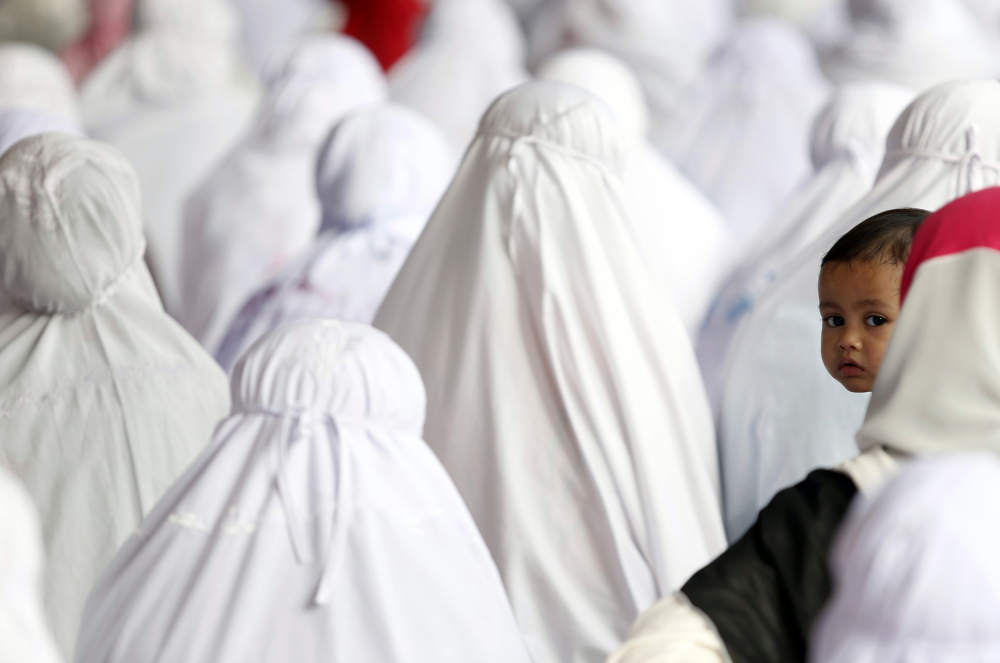KUALA LUMPUR, June 27 — Culture, tradition and religious fundamentalism are the main culprits behind child marriages in Malaysia, groups said today.
Sisters in Islam (SIS) spokesman Yasmin Masidi, in a Girls Not Brides global meeting today, said that religious scriptures, such as the Quran and hadiths, are often interpreted in a conservative and literal manner before being translated into law.
This, she said, results in the justification behind the practice of child marriages.
Yasmin said the only feasible solutions to prohibit such a practice included total awareness about the social and economic impact of child marriage on the young girls involved.
“We need a change of mindset at the societal level. National level outreach and public education programmes need to be rolled out at every level of our community.
“These programmes should not only spread awareness about the social and economic damage that child marriage brings but should also include comprehensive sex education for youth and empowerment for girls,” she said in a statement.
She pointed out that child marriage is still being practised in Malaysia despite a 2014 declaration by the National Fatwa Council that it is neither obligatory (wajib) nor encouraged (sunat) in Islam.
According to a Unicef report entitled “State of the World’s Children” released last year, a total of 5,513 Malaysian girls between the ages of 10 and 19 were married or in a matrimonial union, which constitutes 6 per cent of the total adolescent population.
The same report revealed that the figures for Laos, Cambodia and Thailand stood at 25 per cent (1,432), 16 per cent (3,052) and 14 per cent (9,207) of the total adolescent population.
 The Asian Pacific Resource and Research Centre for Women (ARROW), who was also a panellist in the global forum today, echoed SIS’ sentiment.
The Asian Pacific Resource and Research Centre for Women (ARROW), who was also a panellist in the global forum today, echoed SIS’ sentiment.
Its programme manager for Monitoring and Evidence Generation for Change Azra Abdul Cader revealed that Indonesia, Laos, Cambodia and Thailand have the highest number of child brides under the age of 19, for similar reasons.
“Religion and culture influence the justification of the practice and creating a legal environment — such as a lower age of marriage for some girls.
“Religious interpretations on linking the age of maturity to the attainment of puberty, the need to regulate girl’s sexuality, pressure to reproduce, and notions of guardianship, consent, and decision making also have an influence on the practice,” she said
She added accessibility to sexual and reproductive health rights is also a major influence that caused young girls to succumb to child marriage.
“Prevailing gender norms require girls to prove their fertility and conceive soon after marriage.
“Girls often lack decision-making power with respect to use of contraception and timing of pregnancies, with husbands, parents or in laws strongly influencing or controlling married girls’ reproductive behaviour,” Azra added.
 Recently, SIS and ARROW published a report which found that the driving force behind local child marriage cases are religious conservatism, patriarchal beliefs and reasons of sexual impropriety.
Recently, SIS and ARROW published a report which found that the driving force behind local child marriage cases are religious conservatism, patriarchal beliefs and reasons of sexual impropriety.
The report, entitled “Child Marriage: Its Relationship with Religion, Culture and Patriarchy”, revealed that 152, 835 persons below the age of 19 were married and were mostly from the Malay Muslim community.
Eighty-thousand of the total sum were girls while the remaining 72,835 were boys.
Azra concluded that the solutions should include the rights and protection of young brides.
“We must recognise that while attempting to prevent the practice of child marriage, there are girls who are already affected by the practice. These girls are living with the consequences of the practice, which will have lifelong bearing.”



















